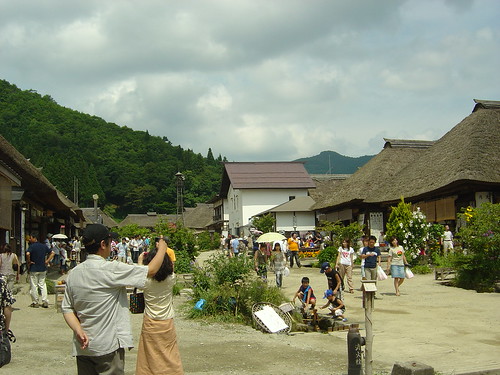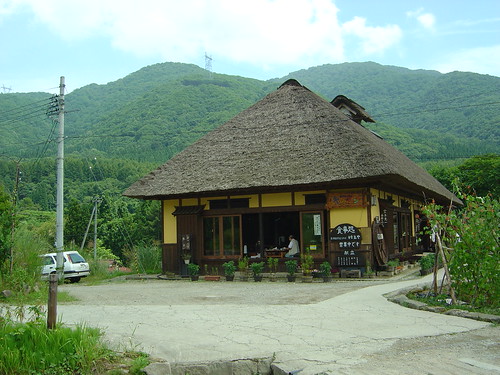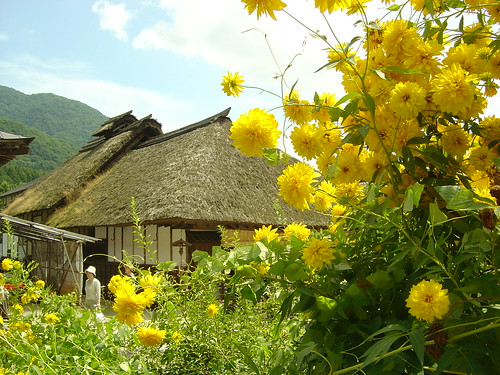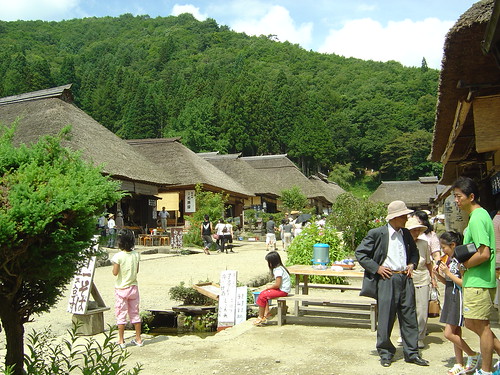An Old Post Town in Fukushima (Japan)
Japanese history has always interested me. After arriving to Japan, I began to immerse myself with reading books about culture and history.
Last weekend, I was able to visit an old post town that is preserved in the Aizu Wakamatsu area of Fukushima Prefecture (or Fukushima-ken in Japanese). This was my second visit to the area because last year, there was a terrible rainstorm soon after I arrived. Last year's rain prevented me from enjoying the sights of yesteryear.
The name of this area is Oouchijuku. It is the oldest post town (in Japanese shukuba) in the area. Oouchi Shimogoumachi (in Japanese, shimogo means preserved and machi means a town) was once a busy road stop in the 1600's. It was originally one of the toll stops along the road between the Aizu Wakamatsu area and areas in Tochigi Prefecture (or Tochigi-ken in Japanese). Merchants and the lords (in Japanese, daimyo) frequently travelled through these small town areas.
As this shukuba became more settled, residents began selling their goods from small shops. Of course, there were tea houses, and inns for the convenience of weary travellers. Also, these areas provided fresh horses for travellers. The area of Aizu Wakamatsu is known for lacquerware. Even today, there are many merchants in this Shimogoumachi that are selling these items from their homes giving us a chance to recreate in our minds how it was to walk along the dirt road, climb the sidewalks (because it is built on a slope), and enjoy the atmosphere of long ago.
Another specialty of this area is soba (in English, these are buckwheat) noodles. There are small places where you can enjoy a summer meal of cold soba noodles for a meal. I was able to enjoy cold soba noodles for my lunch during my visit.
Just walking along the street, I could not help but feel like I had stepped back into a time long ago. In this area is located in the mountains, I could not help feel like I was walking around a time long ago. In my mind, I was seeing the damiyo riding horseback along the streets and many women walking in kimono with their parcels. And, of course, children in kimono running around with other children.
Last year, I felt that I had stumbled upon a place of nostalgia. There are not many buildings like these in Japan because of the costly maintenance of the thatched roof.
Thinking about it, I cannot help but imagine how beautiful this area must look line in the snow...
more later...
Last weekend, I was able to visit an old post town that is preserved in the Aizu Wakamatsu area of Fukushima Prefecture (or Fukushima-ken in Japanese). This was my second visit to the area because last year, there was a terrible rainstorm soon after I arrived. Last year's rain prevented me from enjoying the sights of yesteryear.
The name of this area is Oouchijuku. It is the oldest post town (in Japanese shukuba) in the area. Oouchi Shimogoumachi (in Japanese, shimogo means preserved and machi means a town) was once a busy road stop in the 1600's. It was originally one of the toll stops along the road between the Aizu Wakamatsu area and areas in Tochigi Prefecture (or Tochigi-ken in Japanese). Merchants and the lords (in Japanese, daimyo) frequently travelled through these small town areas.
As this shukuba became more settled, residents began selling their goods from small shops. Of course, there were tea houses, and inns for the convenience of weary travellers. Also, these areas provided fresh horses for travellers. The area of Aizu Wakamatsu is known for lacquerware. Even today, there are many merchants in this Shimogoumachi that are selling these items from their homes giving us a chance to recreate in our minds how it was to walk along the dirt road, climb the sidewalks (because it is built on a slope), and enjoy the atmosphere of long ago.
Another specialty of this area is soba (in English, these are buckwheat) noodles. There are small places where you can enjoy a summer meal of cold soba noodles for a meal. I was able to enjoy cold soba noodles for my lunch during my visit.
Just walking along the street, I could not help but feel like I had stepped back into a time long ago. In this area is located in the mountains, I could not help feel like I was walking around a time long ago. In my mind, I was seeing the damiyo riding horseback along the streets and many women walking in kimono with their parcels. And, of course, children in kimono running around with other children.
Last year, I felt that I had stumbled upon a place of nostalgia. There are not many buildings like these in Japan because of the costly maintenance of the thatched roof.
Thinking about it, I cannot help but imagine how beautiful this area must look line in the snow...
more later...







0 Comments:
Post a Comment
<< Home